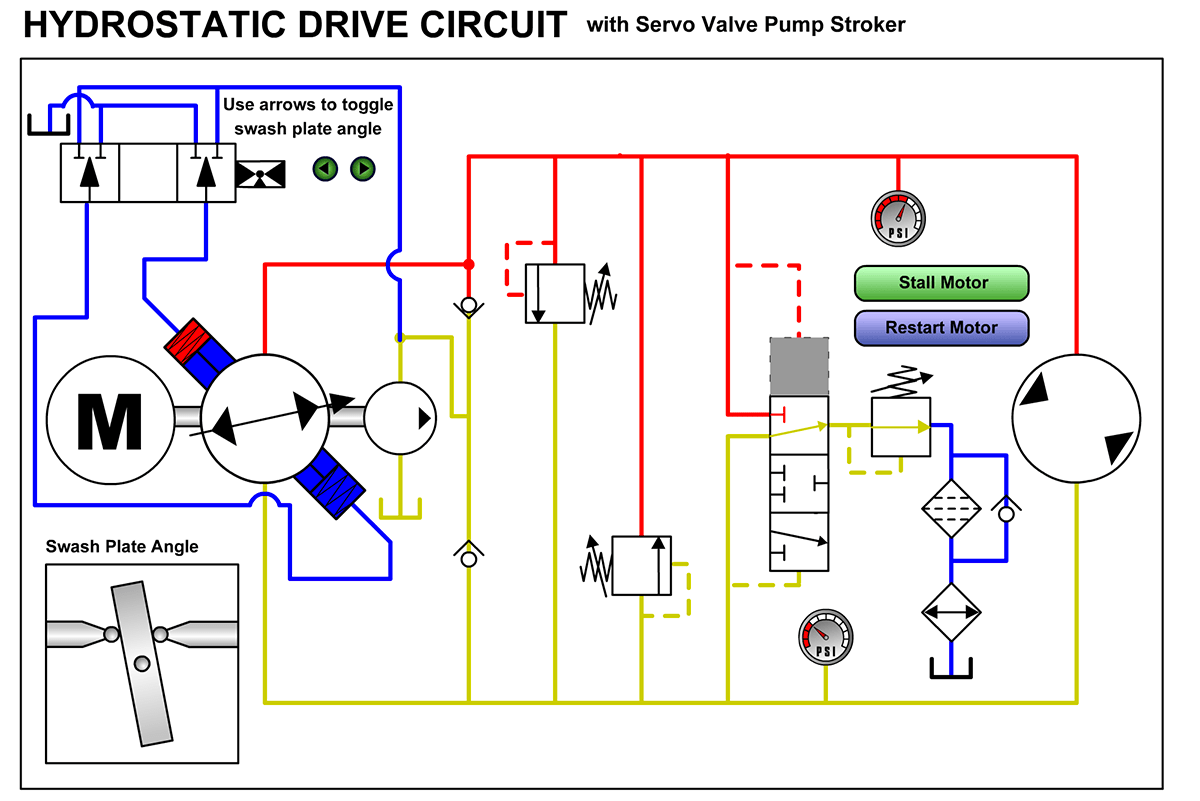Hydrostatic transmissions use oil, under pressure, to provide movement for the tractor. The fluid is pressurized with a pump inside the transmission. If any air is in the fluid, the pump will try to pressurize air. This condition is known as cavitation, and is detrimental to the pump since it allows the pump top operate dry. When the pump cavitates it is not pressurizing any fluid, so the transmission is not able to provide the movement needed.
Hydrostatic vs friction disk snow blower drive system - YouTube. If playback doesn't begin shortly, try restarting your device. Hydrostatic drives are widely recognized as an excellent means of power transmission when variable output speed is required.

If your mower is new, or has been stored for a long period (longer than 2 months) the transmission needs to be purged before use. Also, if you experience loss of drive, or slower response, then the transmission should be purged first.
The following procedure will remove trapped air inside the transmission(s).
Hydrostatic Drive Axle

If your mower is new, or has been stored for a long period (longer than 2 months) the transmission needs to be purged before use. Also, if you experience loss of drive, or slower response, then the transmission should be purged first.
The following procedure will remove trapped air inside the transmission(s).
Hydrostatic Drive Axle
Hydrostatic Drive Fluid
IMPORTANT: SHOULD YOUR TRANSMISSION REQUIRE REMOVAL FOR SERVICE OR REPLACEMENT, IT SHOULD BE PURGED AFTER REINSTALLATION BEFORE OPERATING THE TRACTOR.
Step 1- Place the rear of the mower safely onto jackstands on a level surface with engine off and parking brake set.
Step 2- Disengage transmission by placing freewheel control, located at the back of the frame, in the freewheeling position.
2a- Mowers with seperate pumps and wheel motors the freewheel is activated by turnign the bypass valves, one on each pump, two full turns.
The oil resevoir needs to be filled to the specifications listed in the owners manual before starting the purge procedure.
Hydrostatic Drive Problems
Step 3- Sitting in the operators seat(riders), start engine. After the engine is running, move throttle control to slow position. With motion control levers in neutral (N) position, slowly disengage clutch/brake pedal.
Step 4-Move motion control levers to full forward position and hold for five (5) seconds. Move levers to full reverse position and hold for five (5) seconds. Repeat this procedure three (3) times.
NOTE: During this procedure there may be some movement of the drive wheels, but they are not under load. The air is being removed from hydraulic drive system.
Step 5-Move motion control levers to neutral (N) position. Shutoff engine and set parking brake. Check and add oil as needed for units with an oil resevoir.
Step 6-Engage transmission by placing freewheel control into driving position, or by closing the bypass valves on the pumps.
Step 7-Sitting in the operators seat, start engine. After the engine is running, move throttle control to full speed. With motion control levers in neutral (N) position, slowly disengage clutch/brake pedal.
Step 8-Slowly move motion control levers forward, after the tractor moves approximately five (5) feet, slowly move motion control levers to reverse position.
After the mower moves approximately five (5) feet return the motion control levers to the neutral (N) position. Repeat this procedure with the motion control levers three (3) times.
Step 9-Your mower is now purged and now ready for normal operation.
Hydrostatic Drive System
For further information or assistance, we recommend contacting your local authorized service center,

